The Setting for Sisters at War – and my Childhood Memories
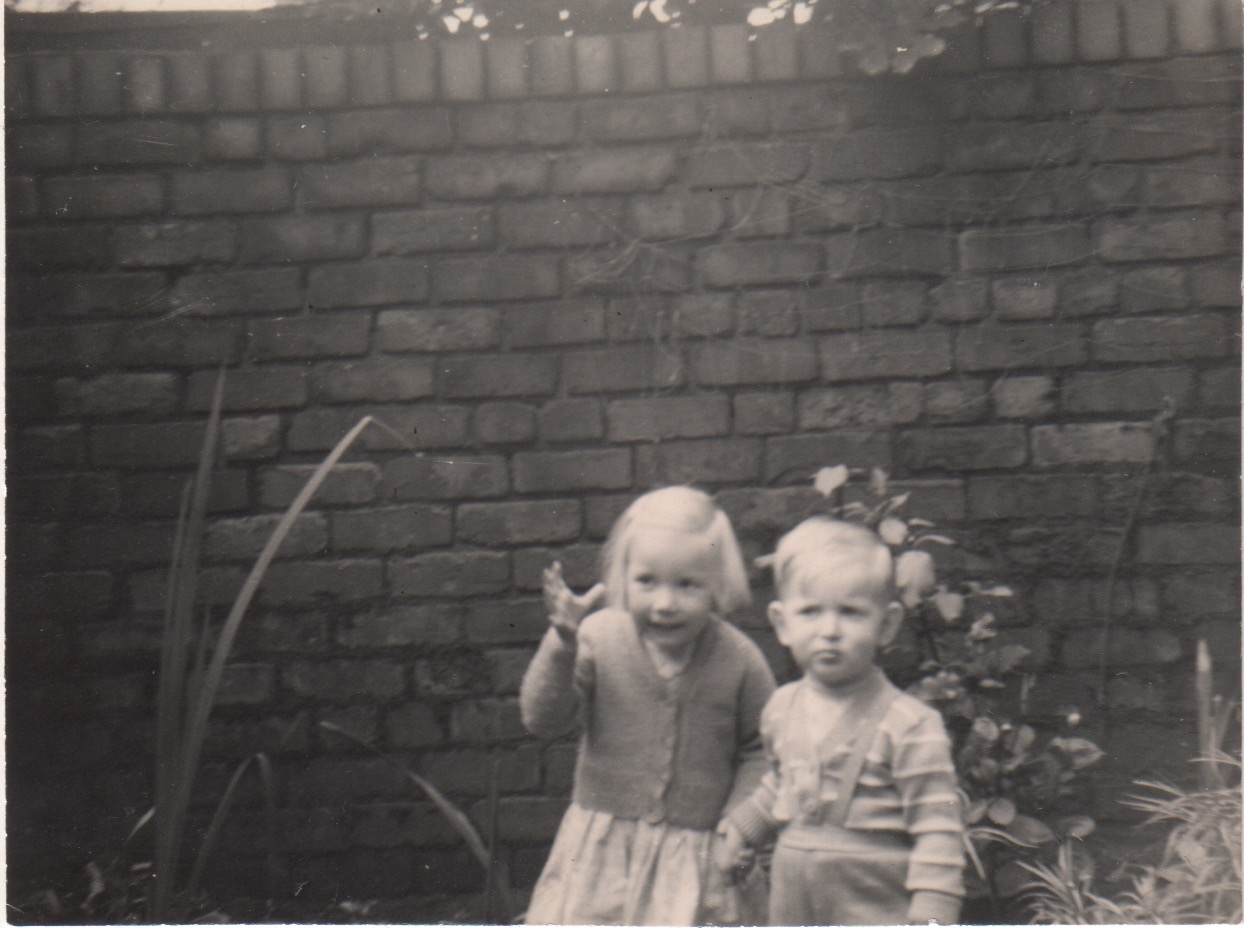
The setting for Sisters at War draws on my childhood memories. My latest novel takes place in 1940-41 in the city of Liverpool, on the high seas of the Atlantic and eventually in Australia. Today, I thought I’d tell you about the area of Liverpool where Hannah and her sister Judith live in a large house, The Laurels, on Moss Lane.
The district is called Orrell Park and it’s where I spent the first five or six years of my life – with frequent returns throughout my childhood and early adulthood to visit relatives. We lived in a red-brick terraced house on Kingfield Road and our back garden backed onto a railway line and, on the other side of the track, the grounds of Walton Jail. Further down the road, my granny lived with my aunt and uncle and their four sons – the youngest of whom was about my age. A five minute walk away, in a road on the other side of Moss Lane, my four unmarried aunts lived with my maternal grandmother. The photo above is of me with my brother in the back yard at No 8 as we referred to The Aunties’ house.
The Laurels isn’t based on an actual house but there are some large villas on Moss Lane so I imagined it as similar to one of them. When I visited my aunties I used to see the back of one of those big old houses. It looked very neglected and had missing roof tiles with birds nesting inside the roof and I understood a reclusive old man lived there. (Based on that picture above I am probably trying to frighten my brother with some scary story about the crazy old chap). When I came to write Sisters at War I drew on the memory of that old man when I created the character of Mr Hathaway, the next-door neighbour whom Hannah befriends. Those big houses backed onto the alleyway – or entry as we called it – behind my aunties’ house and at the corner was a stable where throughout my childhood a horse resided. I presume he belonged to a rag and bone man – there were still some of those around when I was a kid.
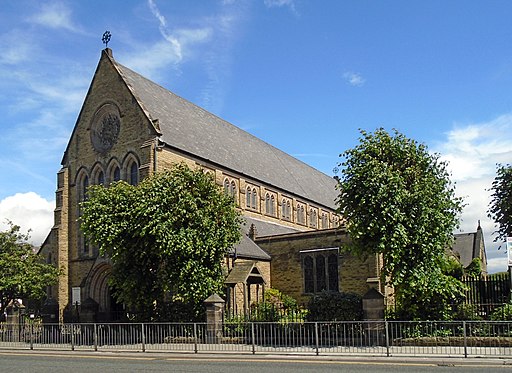
Image of Blessed Sacrament church via Wikimedia Commons , Rodhullandemu
Walton Vale, at the bottom of Orrell Lane, also features in the book. When I was small this was a pleasant road with trees and shops on either side, but as cars increased in number and were afforded more importance than pedestrians, it was ruined by the installation of long metal barriers between pavement and road, forcing pedestrians to cross only at one or two designated points and ruining the sense of community. They have replaced the super-ugly 1960s ones now with slightly less hideous ones – and I suppose after all it is a main arterial road out of Liverpool.
On Walton Vale is the Catholic church of Blessed Sacrament, where my parents were married. In fact they met through the church, as both were involved in the Dramatic Society and Dad directed Mum in several plays, including the leading role in Gas Light. It was a very Catholic community and on Sunday mornings there were large groups of people heading down Moss and Orrell Lanes to go to Mass – all wearing Sunday best – ladies’ hats obligatory! My first school was Blessed Sacrament, tucked away behind the church in those days, but since relocated to the site of the old Hartley’s jam factory. When I was there I was taught by nuns – although there were lay teachers as well – including my dad. In Sisters at War Blessed Sacrament is the scene of a serious misunderstanding on Hannah’s part early on the story .
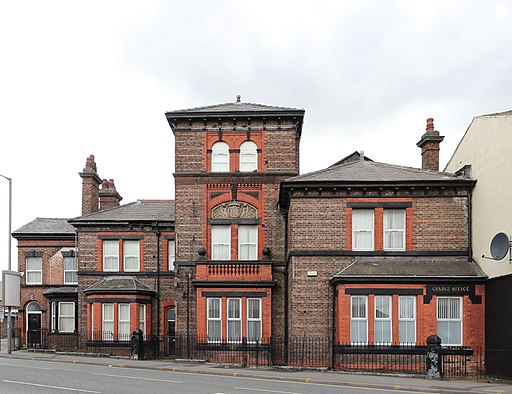
Picture Credit: Walton police station, Rice Lane, By Phil Nash from Wikimedia Commons CC BY-SA 4.0, CC BY-SA 4.0
Another real place that features in the book is the police station at Rice Lane, the site of the beginning of a nightmare for Paolo Tornabene and his fellow Italians. I have no idea whether any Italian aliens were temporarily held there before their internment began – but as the round-ups happened immediately after Churchill gave the orders to “collar the lot!” it made sense to me. Apparently the building has now been converted into residential flats.
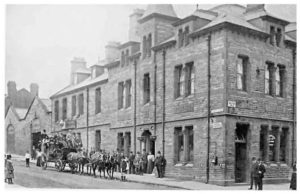 I also used the pub, The Windsor Castle, which stands on the corner of Orrell Lane and Walton Vale. I remember as a child thinking it was the ugliest building I’d ever seen. Of course the reason was that the original pub, a large Victorian building, was a victim of the Liverpool Blitz so the monstrosity that’s there now is a post war construction. The pub in the book is in its pre-war state – when I wrote the book I’d never seen a photo of it – only of heaps of rubble in a blitz photo in the Museum of Liverpool – but I’ve just discovered one now. I can’t attribute it as there was no attribution – I found it on a Pinterest page. I imagine it is from the archives of the City of Liverpool
I also used the pub, The Windsor Castle, which stands on the corner of Orrell Lane and Walton Vale. I remember as a child thinking it was the ugliest building I’d ever seen. Of course the reason was that the original pub, a large Victorian building, was a victim of the Liverpool Blitz so the monstrosity that’s there now is a post war construction. The pub in the book is in its pre-war state – when I wrote the book I’d never seen a photo of it – only of heaps of rubble in a blitz photo in the Museum of Liverpool – but I’ve just discovered one now. I can’t attribute it as there was no attribution – I found it on a Pinterest page. I imagine it is from the archives of the City of Liverpool
The Carlton Cinema on Moss Lane was still showing films when I was a child. I remember my dad taking me there to see Tom Thumb. I can only imagine that uncharacteristic act on his part was in order to get me out of the house while my mum gave birth to my sister! The Carlton became a bingo hall in the mid 1960s and then shut down altogether. It too was bombed in the war – an incendiary setting fire to the roof – something I mention in the book.
Other real places mentioned are The Orrell Park Ballroom on the corner of Moss and Orrell Lanes, and Orrell Park station which was just opposite it.
I really enjoyed drawing on these childhood memories when I wrote Sisters at War. Orrell Park was very different in the days of my childhood. Very safe – we could play out in the traffic-free streets and in the local park – and rather genteel. Sadly I suspect neither of those things are the case nowadays.
Sisters at War, while written to read as a standalone, does form part of the Across the Seas series and follows directly on from Storms Gather Between Us – which also features Orrell Park. It is available at all key online retailers and will shortly be available in Paperback too. The two earlier books are available in Print and audio as well as ebooks at all key retailers.
Here’s a little map I’ve drawn to show the rough locations of the key places of Orrell Park mentioned in the book. Forgive me – I’m no cartographer and it’s absolutely not to scale!


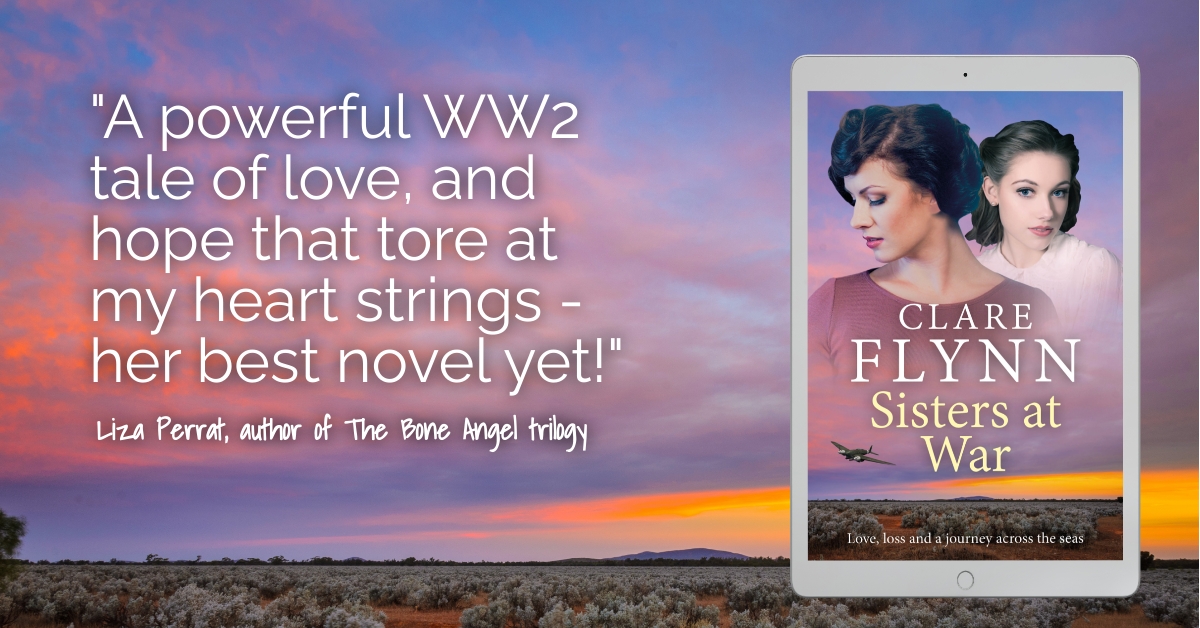
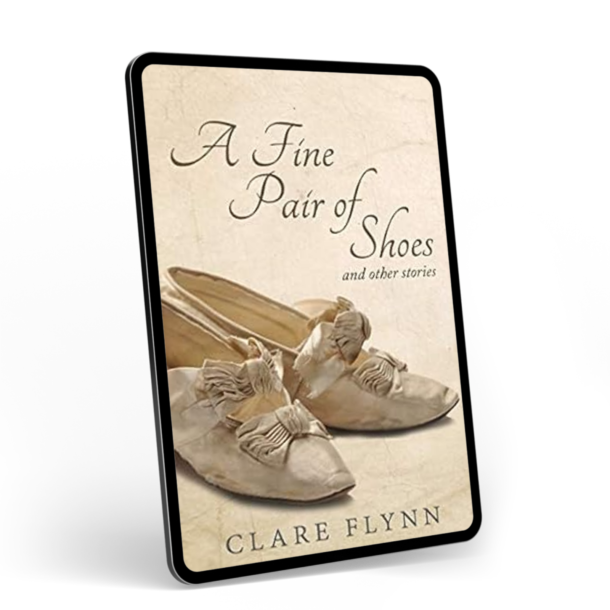
Hannah and Judith are Jewish names which gives me great enjoyment since I am Jewish. The novel sounds captivating and wonderful. World War 11 stories are meaningful, profound and memorable since the era was so important and unforgettable.
Christian too – as they originate in the Old Testament.
Thanks for the lovely comment and yes WW2 must have been a tough time to live through
Hi my name is Michelle and I live in Australia. My dear sister in knows that her dad lived in moss lane in Bootle and I was wondering if you have any photos from the 1920s. Also how could I buy your book for her please
Hello Michelle, sadly I don’t have any photos showing Moss Lane in the 1920s. None of my family were great photographers – indeed it was a family joke that my aunties always managed to cut people in half or decapitate them in their photos! All I know is that it was a very pleasant tree-lined road then and very respectable with large villa-style houses and a parade of shops, with roads of terraced houses running off it. My parents’ families lived in the roads of terraces but on different sides of Moss Lane. You can buy the book from Amazon Australia. Or ask in a bookstore there for them to order it. I presume your sister is in Australia too.